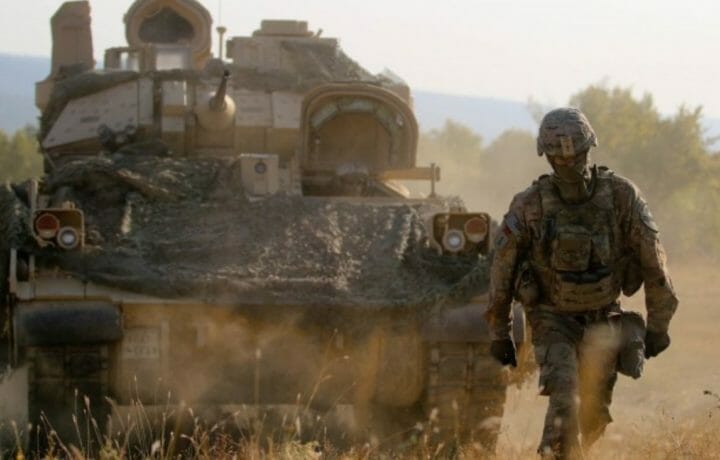The Army may not need a green replacement for all ground vehicles, but could an EV (electric vehicle) be a good idea for in some military battlefield functions? Despite the Army’s long love affair and the bravado of the combustion engine, we are seeing the auto industry move toward electrification. However, the Army Futures Command is concerned that this movement could reduce supply sources for engine parts and cause an increase in material cost. But how desirable is this capability on the battlefield?
The Value of an Electric Vehicle for Calvary
The Cavalry Scout is the eyes and ears out on the field. They report information on enemy movement and activities, enabling the proper employment of various weapon systems onto the enemy. While trying not to engage with the enemy, Cavalry Scouts would typically have anti-armor weapons for protection. Scouts need stealth and the ability to perform covertly. Should engagement occur, scouts quickly bring significant fire power to the enemy, disengage, and evade.
Could a role such as the cavalry mission potentially benefit from a combat EV? Such a vehicle would need to move quickly while carrying fire power to disengage from the enemy, have minimal refueling requirements, and be easily refueled and maintained. The best benefit would be the ability to provide quiet maneuver, reducing potential enemy observation.
Therefore, the Army is thinking there are enough advantages for a combat EV for scouts. The Army published a market survey last November in search of a fully electric or hybrid-electric tactical vehicle to enhance acquisition strategy of its electric Light Reconnaissance Vehicle (eLRV) program. Perceived advantages beyond silent mobility and Liquid Fuel Reduction include such areas as increased reliability and maintainability through powertrain simplicity, increased mobility, cost savings, and torque and speed in austere environments.
Tesla OUt on the Battlefield
According to the Army Times this week, the “battlefield Tesla” details are beginning to emerge about what the Army desires for a potential electric light reconnaissance vehicle. Beside an all-electric or hybrid-powered vehicle, and on-board power to charge equipment, the requirements must include seating for six scouts. Additionally, it must weigh less than 8,000 pounds with ability to carry 4,000-pound payload, be sling load transportable, and low velocity air drop capable. The vehicle and variants must be able to mount a MK-19 grenade launcher, M2 .50 caliber machine gun, and Javelin. Most importantly, the vehicle must be quiet.
Official details from the Army Requirements Oversight Council are expected by this month, according to the presentation.
Tactical and Combat Vehicle Electrification program
The Tactical and Combat Vehicle Electrification program, or TaCV-E provides oversight on the electric vehicle progress and is schedule for final approval this summer. With the intent to reduce noise and thermal signature, increase speed, reliability, duration and reduce liquid fuel and maintenance requirements across the Army fleet, the TaCV-E program will allow developers to incorporate electrification advancements into both existing and future vehicle systems.
Short term planning includes light vehicles up to 2.5 tons. It is believed that batteries and charging capabilities will improve and mid-size vehicles (2.5 to 10 tons) will be enhance and developed next. The program will likely build on hybrid technologies over the light and medium fleet, with hopes that improvements in battery and other technologies that allow for all-electric vehicles will be in the future.




